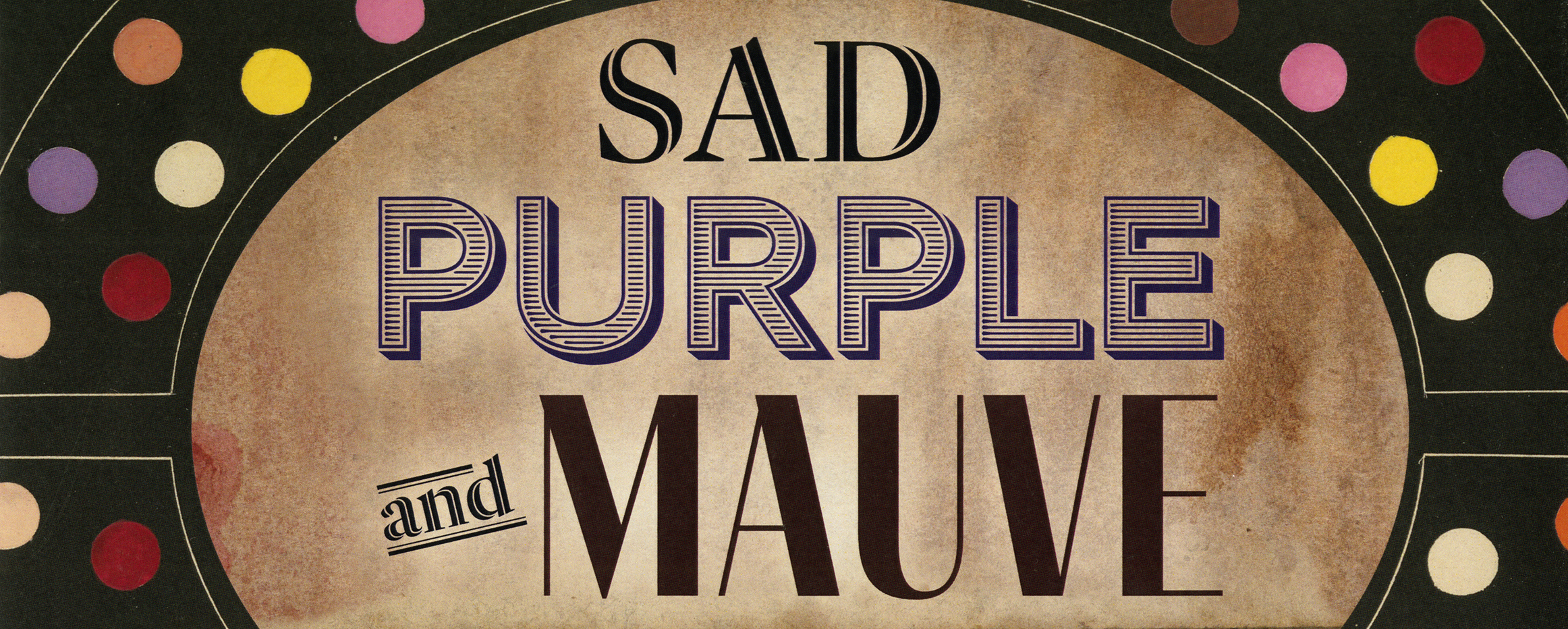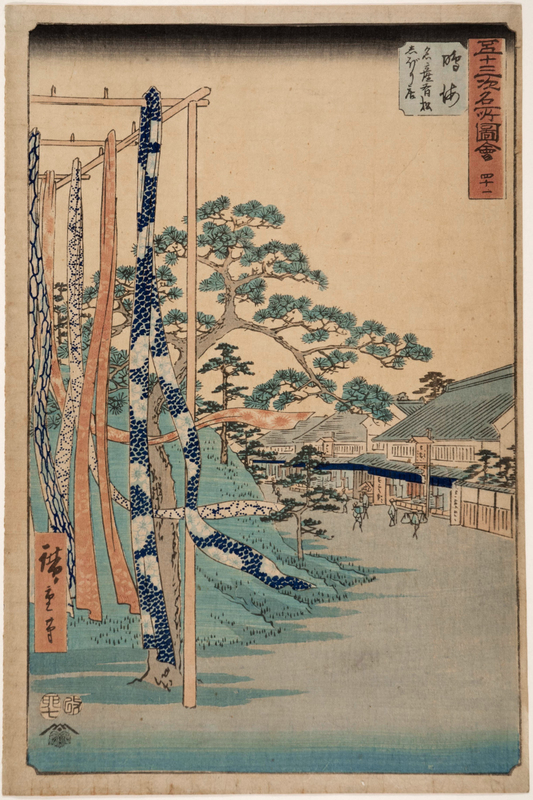Shibori
DYE COMMERCE IN 19th-CENTURY JAPAN
This print depicts the town of Arimatsu, which for centuries has been the center of Japan’s shibori dye culture. Shibori cloth is cotton or silk that is tied up such that the color (usually blue from indigo or red from safflower petals) will be absorbed only by exposed areas, while the compressed sections remain white.
Hiroshige was one of the most famous makers of woodblock prints in the 19th- century, and his depiction of shibori businesses exemplifies his compositional daring. While other artists had previously depicted Arimatsu dye markets, they had relied on a horizontal, landscape orientation of the paper to capture the long stretch of shops along the street. Hiroshige’s vertical format gives him room to showcase long strips of shibori cloth and their individual patterns, while he plunges the traffic of dye commerce into the distance.
— Written by Sarah K. Rich (Art History, Center for Virtual/Material Studies)
Andō Hiroshige
Narumi: Famous Arimatsu Tie-dyed Cloth
from The Fifty-three Stations on the Tokaido Road (1855)
Ukiyo-e Woodblock Print
Ink and color on paper
On loan courtesy of the Palmer Museum of Art

